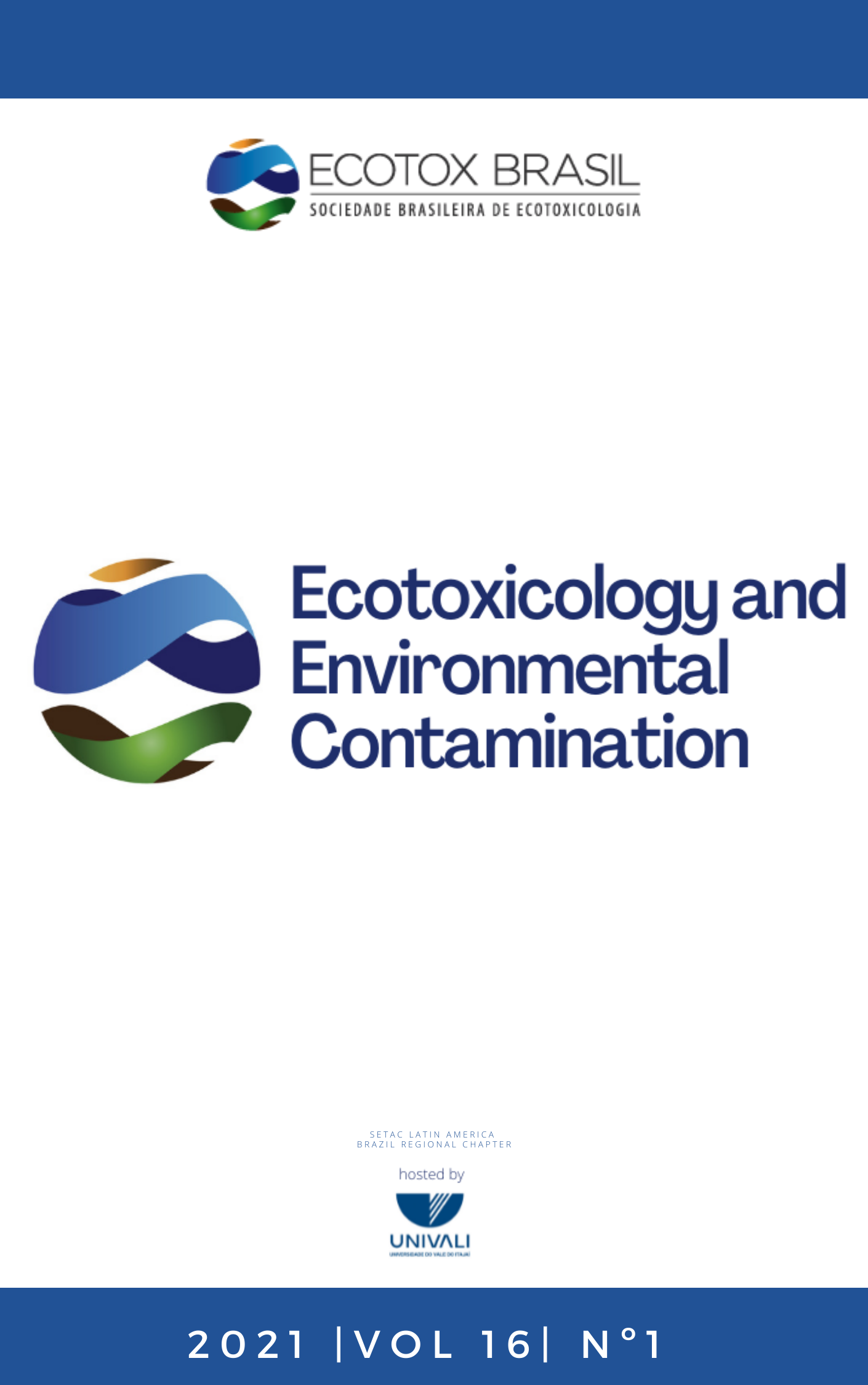Short-term effects of glyphosate and Roundup Transorb® formulation on the cyanobacteria Synechococcus elongatus
DOI:
https://doi.org/10.5132/eec.2021.01.07Abstract
Glyphosate is an active ingredient used in herbicide formulations worldwide. However, besides glyphosate, these formulations have other components to facilitate glyphosate absorption by plants. These include the surfactants such as polyoxyethylene amine (POEA) present in the Roundup Transorb® (RT) formulation. Glyphosate formulations are potentially more toxic to non-target organisms than the pure active ingredient. In this work, we evaluated the toxicity (72 h) of pure glyphosate and RT for the cyanobacterium Synechococcus elongatus, based on biomass growth and cell viability. The formulation proved more toxic than pure glyphosate for both parameters analysed, with an IC50 (Inhibition concentration mean) based on biomass measured by optical density (750 nm) that was sixty times lower. Cell viability was not as sensitive as the biomass because, of the few cells left in the culture, most were viable. This indicates that there is a variation in tolerance between the cyanobacteria present in the inoculum. Thus, cell viability may underestimate the results of glyphosate and RT toxicity and be useful only in low concentrations of exposure.Downloads
Downloads
Published
How to Cite
Issue
Section
License
Copyright (c) 2021 Ecotoxicology and Environmental Contamination

This work is licensed under a Creative Commons Attribution 4.0 International License.
Copyright © 2006 ECOTOX-Brasil
Copyright notice: It is a condition for publication that manuscripts submitted to this journal have not yet been published and will not be simultaneously submitted or published elsewhere. By submitting a manuscript, the authors agree that copyright for their article is transferred to the Sociedade Brasileira de Ecotoxicologia (ECOTOX-Brasil) if and when the article is accepted for publication. The copyright covers the exclusive rights to reproduce and distribute articles, including reprints, photographic reproductions or any other reproduction of a similar nature, including translations. No part of this publication may be reproduced, stored in a retrieval system or transmitted in any form or by any means, electronic, mechanical, photocopying, recording or otherwise, without permission of the publisher.
Notice: While every effort is made by the EEC, editors and editorial board to see that no inaccurate or misleading data, opinions or statements appear in this journal, they wish to make it clear that the contents of the articles and advertisements published herein are the sole responsibility of the contributors or advertisers concerned. Accordingly, the EEC, the editorial board and editors and their respective employees, officers and agents accept no responsibility or liability whatsoever for the consequences of any inaccurate or misleading data, opinion or statement.




